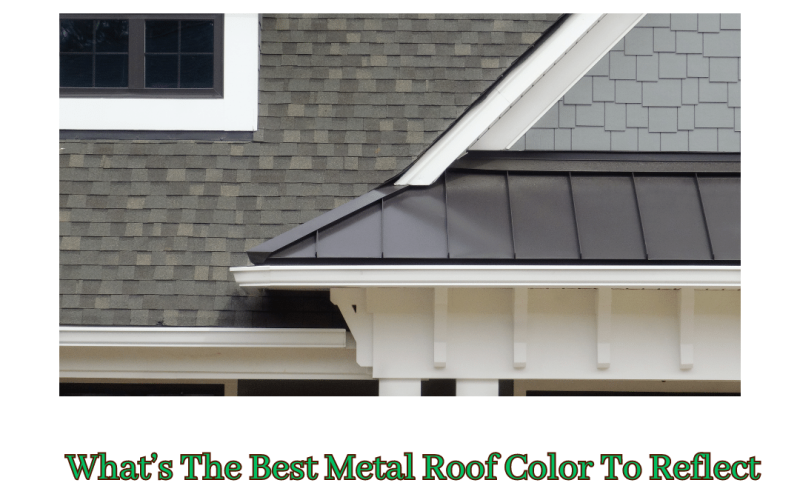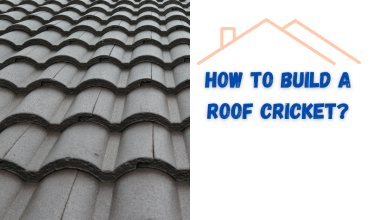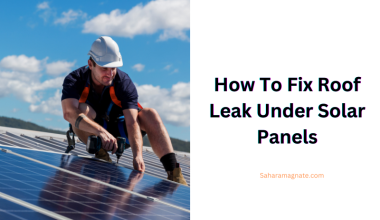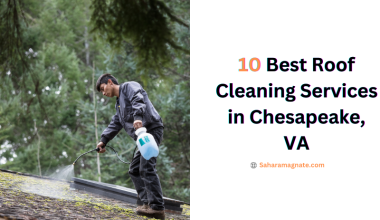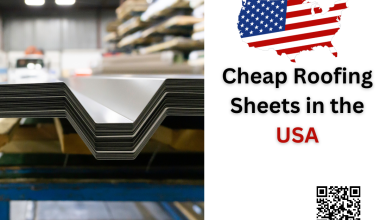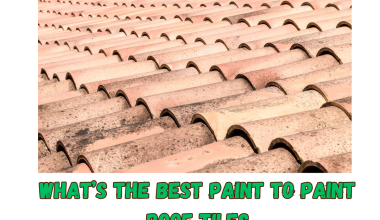If you’re looking for the perfect roof color to keep your home cool during the summer, you’ve come to the right place.
When it comes to metal roof colors, one of the most important factors is how much heat it reflects.
With so many colors and shades, how do you know which one will best keep your home cool? The answer lies in understanding the science behind how colors absorb and reflect light and heat.
This article will explore what makes different colors ideal for reflecting heat off a metal roof and which is best for keeping your home cool.
We’ll also walk you through some factors to consider when selecting a metal roof color, so you can make an informed decision that maximizes comfort and energy efficiency. Ready? Let’s get started.
What Are the Benefits of a Metal Roof?
Metal roofs have various benefits, making them an attractive choice for homeowners. For starters, metal roofs are highly durable and can last up to 50 years with proper maintenance.
They are also very lightweight, so they don’t put extra strain on your home’s structure, and they’re fire-resistant due to their non-combustible nature.
One of the biggest benefits of metal roofs is that they can reflect up to 90 percent of the heat away from your house, making them much cooler than many other roofing materials.
This means your house stays at a more comfortable temperature throughout the day, and you can save money on energy costs.
On top of all that, metal roofs are low maintenance and come in various colors and styles to fit any home’s aesthetic.
How Does Color Affect the Efficiency of a Metal Roof?
When selecting the color of your metal roof, it is essential to consider how it can affect the performance of your roof.
The color of your metal roof can significantly impact energy efficiency, as different colors have different solar reflectance levels.
Solar reflectance is the ability of a material to reflect – rather than absorb – the sun’s heat. A metal roof with high solar reflectance will be less likely to absorb the sun’s heat and remain cooler in hot weather.
So, to ensure your metal roof stays cool, look for lighter-colored metal with higher solar reflectance.
The most reflective metal roofs are typically light colors, such as white or off-white, though there are some other options, such as light gray or green, that also provide good solar reflectance.
Remember that darker colors absorb more heat and can increase energy costs during hot summer months.
What’s The Best Metal Roof Color To Reflect Heat?
Cool roofs are becoming increasingly popular because they can reduce the energy needed to cool a building and save money in the long run.
But what is the best metal roof color to reflect heat?
Lighter colors are usually better when reflecting heat. Light colors absorb less heat than dark colors and can help keep your building cooler.
The most common color for metal roofs is usually white or light gray. Still, other options—such as pale blues, greens, yellows, or even terra cotta and pinkish hues—can also reflect or absorb heat, depending on the environment.
The right hue can help keep your home cooler while adding a touch of style.
- Light Bronze/Tan
Light bronze or tan-colored roofs are a great choice for homes in warmer climates. This neutral hue does an excellent job of reflecting sunlight and helps reduce the heat that enters your residence and energy bills.
- White/Metallic Gray
White or metallic gray roofs are perhaps the best color if maximum heat reflection is essential.
Not only do these hues reflect up to 80 percent of the sun’s radiation they also keep roofs cooler during times of direct sun exposure.
Additionally, these colors often come with warranties extending up to 50 years – a bonus if you’re looking for long-term protection against Mother Nature’s wrath.
- Colonial Red Metal Roof
One popular option for reflective roofing is the colonial red metal roof, which offers aesthetic and functional benefits.
Colonial red metal roofs are designed to resemble clay tile roofs or give off an old, rustic vibe, making them an excellent choice for homeowners who want a classic look.
Additionally, these roofs reflect around 24% of the sun’s heat rays away from the building below.
This makes them an energy-efficient choice that can help reduce the heat entering your home, ultimately reducing your cooling costs.
Factors That Influence Color Choice When Selecting a Metal Roof
There are a lot of factors to consider when selecting the best metal roof color for reflecting heat. Color choice plays a significant role, but so do other factors, like the type and pitch of the roof.
These subtle elements can severely impact how much heat is reflected or retained.
Roof Type
The type of roof you have will affect how much heat is reflected. Flat roofs absorb more heat than sloped roofs, so if your metal roof has a low pitch, you should consider this when choosing a color. Darker colors absorb more heat than lighter ones when used on flat roofs.
Location and Climate
Climate and location can also play a role in your decision. If you live in an area with intense sun exposure, such as the desert regions of the United States, you’ll want to choose lighter colors that reflect more light and heat away from your home.
On the other hand, if it’s essential to reduce cooling costs during winter in areas with mild temperatures all year round, darker colors tend to absorb more solar radiation and keep your home warmer during cold weather.
Environmentally Conscious Choice
Finally, many homeowners want to make environmentally conscious choices when selecting their metal roof color.
If this is important, consider choosing an Energy Star-rated color that helps insulate your home in the summer and winter for maximum energy efficiency.
The Pros and Cons of Choosing a Reflective Metal Roof
Beyond the aesthetics, when choosing a metal roof color, it’s essential to consider how reflective it is.
Lighter colors tend to reflect more heat, but that’s not always a good thing. So here are some of the ups and downsides of using these metal roofs:
Pros
- Lower monthly utility costs: Lighter-colored metal roofs reflect solar heat and UV rays, so you won’t have to use as much energy cooling your home during the summer months. This can lead to cost savings on your energy bills and less wear and tear on your AC unit.
- Reflective metal roofs are typically made with recycled materials that are fully recyclable at the end of their life cycle. This makes them an environmentally friendly choice that won’t add extra waste to landfills.
- Higher resale value—a home with a light-colored roof will be attractive to buyers who may prioritize energy efficiency.
- Longer-lasting roof—light colored metal roofs won’t be subjected to as much thermal shock (heat/cold cycles), so they’ll last longer.
Cons
- Darker colors attract solar heat and cause greater internal temperatures in attics which could result in ice damming due to melting snow leading to leaks or water damage throughout your attic or home.
- Light-colored metal roofs can be susceptible to chalking and fading over time due to their higher level of reflectivity and ultraviolet light exposure. This means they may need to be replaced sooner than their darker-hued counterparts, requiring less upkeep and maintenance.
Conclusion
Choosing the right metal roof color can significantly impact the amount of heat your roof reflects.
Light colors are the best choice to reflect heat and help keep your home cooler in the summer. Consider investing in a quality reflective coating to ensure the best heat reflection possible.
Finally, it’s important to remember that metal is a sustainable choice for your roof and can offer various other benefits, such as a longer lifespan and a higher return on investment.
Considering all these factors, you can choose the best metal roof color for your home.

